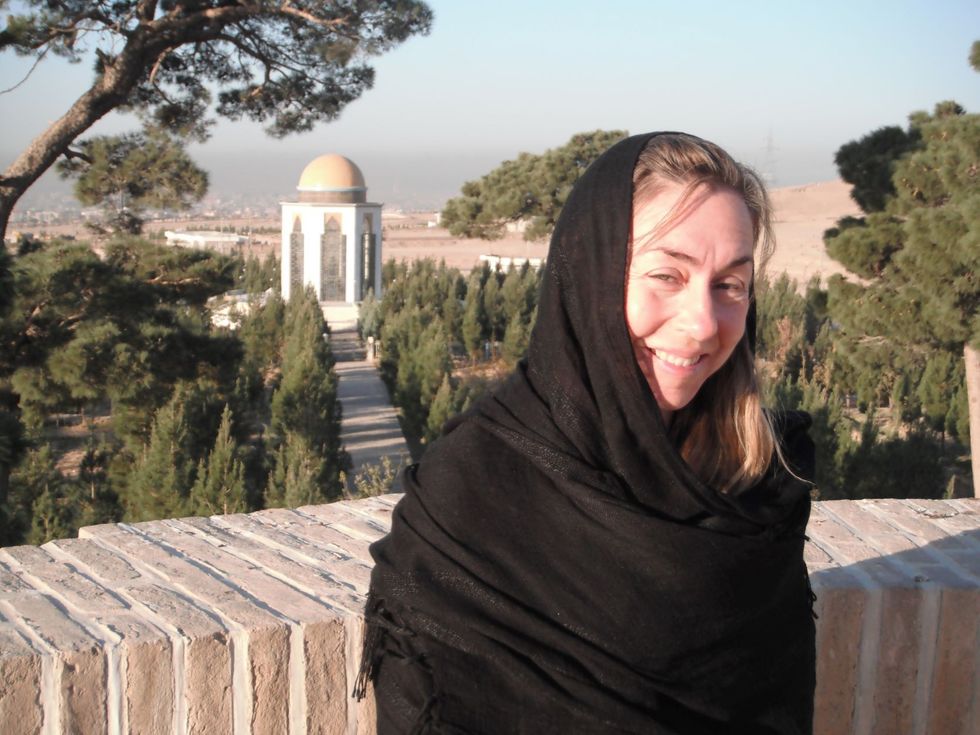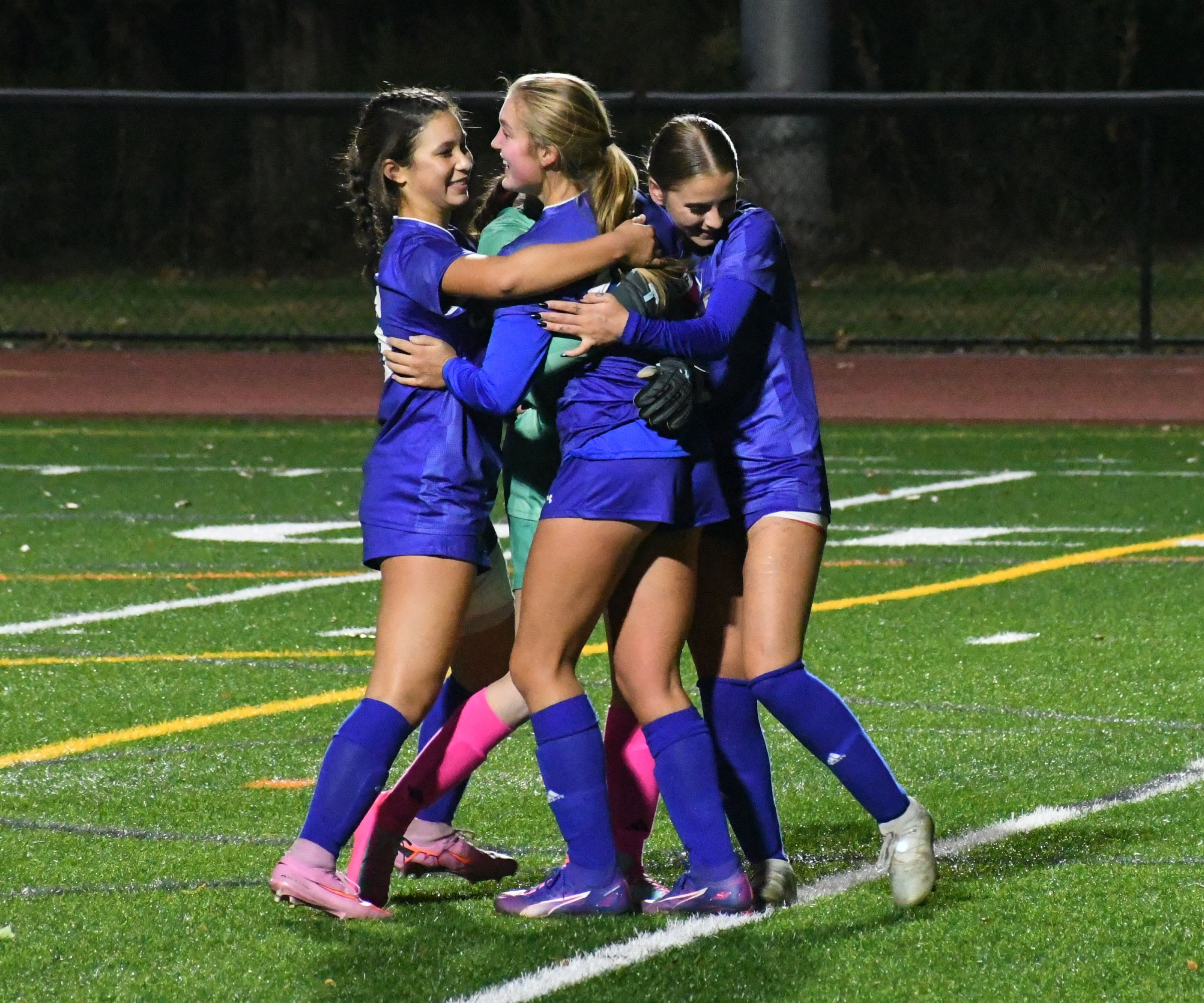Afghanistan: A ‘monuments woman’ whose mission is to save the arts and culture

Laura Tedesco has been working with the U.S. government to save cultural treasures in Afghanistan. Photo Courtesy Laura Tedesco

Many people first learned about the Monuments Men of World War II by reading Robert M. Edsel’s book about them, or seeing the 2014 film “Monuments Men.”
Of course there were many heroic women who also helped protect the cultural treasures of Europe from Hitler, Goering and others.
But the book and the film were primarily concerned with the men who were in charge of the American team tasked with finding and saving some of the great works of Western art.
A new podcast is out now called “Monuments Woman,” and it features an ongoing conversation between two experts in Afghan art and cultural treasures. The idea for the podcast came from producer/director/writer Christian Bruun (whose film “Calendar Girl” is proving to be one of the big draws for this year’s online Berkshire International Film Festival).
When he was living in New York City, Brunn became friends with both George Gavrilis and Laura Tedesco. Tedesco is now an archaeologist and anthropologist working with the U.S. Department of State’s Bureau of South and Central Asian Affairs. Her main area of expertise is Afghanistan. She is the Monuments Woman around whom the podcast is organized.
She and Gavrilis became friends through their shared interest in cultural history in general and Afghanistan in particular; and it was Bruun who came up with the idea that they should team up and do a podcast (the first that Bruun has worked on).
“The idea had been floating around for a while,” Bruun said. “Laura has had the idea in her mind for 10 years that these treasures need to be talked about and not forgotten.”
Gavrilis did a nine-hour oral history interview with Tedesco in spring. The initial idea was to create a documentary format, with narration and a story line.
“But we realized what we had, with the intimacy of these conversations between two friends” and decided to run them in more of an interview style.
This has also allowed the trio to continue to make new episodes; the eighth was “dropped” last week and so far a total of 15 have been recorded. The conversations are all done with a sophisticated virtual conversation software that allows Gavrilis (who is in New York City) and Tedesco (who is in Charleston, S.C.) to speak as though they are sitting side by side. The podcast production company does an initial edit and then Bruun (who is in Los Angeles) listens and makes notes before the final episode is released.
When the first episodes were made, there was some knowledge that the U.S. would withdraw soon from Afghanistan. But there is an immediacy to the events that have followed, with Gavrilis and Tedesco talking about current events as they also talk about ancient history, noting in one episode that Kandahar has just been seized by the Taliban.
Some of the conversation centers around Tedesco’s own life and her decision to travel to a dangerous part of the world while her children are still young. But most of the conversation is about the beauty of Afghanistan and its people and culture — and the threat that exists to both with the takeover by the Taliban.
In an email conversation last week, Tedesco said she can’t comment on what could happen now that the Taliban has returned to power. She did add some details about her work:
“I moved to Kabul in July of 2010 and lived there full time for 16 months. In the winter of 2011, I returned to the States to continue working for the U.S. Dept of State’s Bureau of South and Central Asian Affairs in Washington, D.C., and I traveled to Afghanistan every few months. In total I have made 45 trips to Afghanistan in the past 9 years.”
As the show continues, the conversation goes from more general observations about the nation and its history (including a spree of destruction of statues and other cultural treasures by the Taliban in the 1990s) to more specific observations about particular regions and works of art.
Bruun, who primarily makes documentary films, thinks that the podcast will likely become a film — which would allow the audience to actually see the places and works of art that Tedesco is describing.
The question is whether those works of art will still be around when it’s possible for film crews to return to Afghanistan. Some of course can be seen in photographs. But it’s possible that the descriptions Tedesco shares in Monuments Woman will be the last evidence of many of these works.
Bruun feels hopeful that some of the works will be preserved.
“It’s not an abandoned mission,” he said. “Laura is in South Carolina but she is still working for the government. There is an intent and desire to keep going.”
Of course, as the lives of many Afghanistan natives — especially those who helped the U.S. — are being brutally ended, there is the question of whether art matters anymore. This is one of the topics that Gavrilis and Tedesco discuss. There is no obvious answer; it’s worth listening to hear the thoughtful discussion.
This is an updated version of the story in the Sept. 9 Lakeville Journal.
WOODBURY — Nonnewaug High School claimed twin titles in the Berkshire League soccer tournament finals.
The school's girls and boys teams were named league champions after finishing the regular season with the best win/loss records. Winning the tournaments earned each team a plaque and added to the program's success in 2025.
Both of Nonnewaug's varsity teams faced off against their counterparts from Housatonic Valley Regional High School in the tournament finals in Woodbury Tuesday, Oct. 28.
The boys game was played first. Housatonic took a quick 2-0 lead with goals from Gustavo Portillo and Jackson McAvoy. Nonnewaug responded in the second half with three consecutive goals: first from Cash Medonis then two from Vincenzo Rose. The Nonnewaug boys won 3-2.

The girls game followed. Nonnewaug and Housatonic traded goals early on and the score was tied 2-2 at halftime. Nonnewaug scored twice more in the second half to win 4-2. Housatonic's goals were scored by Ava Segalla. Rosie Makarewicz scored twice for Nonnewaug and Hailey Goldman and Aubrey Doran scored once.
Connecticut Interscholastic Athletic Conference soccer tournaments begin Oct. 31. Both Housatonic teams qualified for the Class S tournament and both Nonnewaug teams qualified for the Class M tournament.
TORRINGTON — Joan Jardine, 90, of Mill Lane, passed away at home on Oct. 23, 2025. She was the loving wife of David Jardine.
Joan was born Aug. 9, 1935, in Throop, Pennsylvania, daughter of the late Joseph and Vera (Ezepchick) Zigmont.
Joan graduated from Harding High School.
She was a working artist for much of her adult life, starting her career studying plein air impressionist oil painting at the Cape Cod School of Art. Her work evolved to include a more representational style, and eventually a large body of abstract pieces. Her award-winning work has been shown in galleries and juried art shows throughout southern New England.
She is survived by her daughter Leslie and her husband George, brothers Joseph, Victor, and their families, nephews Gregory, Christopher, and their families, daughter-in- law Huong, and the extended Jardine family. She was predeceased by her son Douglas, and brother Michael.
A memorial service will be held at All Saints of America Orthodox Church, 313 Twin Lakes Road, Salisbury, Connecticut on Thursday, Oct. 30, at 10 a.m. Memorial contributions may be made to the All Saints of America Orthodox Church, PO Box 45, Salisbury, CT 06068.
The Kenny Funeral Home has care of arrangements.
The ofrenda at Race Brook Lodge.
On Saturday, Nov. 1, the Race Brook Lodge in Sheffield will celebrate the Mexican Day of the Dead: El Día de los Muertos.
Mexican Day of the Dead takes place the first weekend of November and honors los difuntos (the deceased) with ofrendas (offerings) on an altar featuring photos of loved ones who have passed on. Elements of earth, wind, fire and water are represented with food, papel picada (colorful decorative paper), candles and tequila left for the beloved deceased. The departed are believed to travel from the spirit world and briefly join the living for a night of remembrance and revelry.
Music and events programmer Alex Harvey has been producing Día de los Muertos at Race Brook for the past three years, and with the closing of the venue looming, the festival takes on a deep and personal meaning.
“The anchoring gesture of Race Brook, long before I arrived on the scene, has always been to cultivate a space that thins the veil between the worlds. Something otherworldly is hiding in the mountain’s towering shadow: the whispering spring-fed stream, the dense lineage that founder Dave Rothstein brings, the woodsmoke that rises every night of the year from the firepits. This space communes with the spirits,” said Harvey.
“And so we cradle a special ache in our hearts as the leaves turn and the beautiful dance of Race Brook’s project of cultural pollination draws to a close. Fitting, then, to return for one last activation — Día de Los Muertos — a celebration of the end of things. A remembrance of those who’ve made the transition we are all destined for, but also a time when we honor many types of loss. And while we will all mourn those who aren’t there in the flesh, we will also, with humility, come as mourners for the space itself,” Harvey continued.
The event will be a night to remember, to celebrate and to release with ritual, music, and communal remembrance. Participants are invited to bring photos, talismans and offerings for the ofrenda (offering), as well as songs, poems or toasts to share in tribute to loved ones who have passed.
Mexican American musicians Maria Puente Flores, Mateo Cano, Víctor Lizabeth, Oviedo Horta Jr. and Andrea from Pulso de Barro, an ensemble rooted in the Veracruz tradition of son jarocho, will be performing.
Translating to “Pulse of the Clay,” their name reflects a deep connection to the earth and to the living heartbeat of culture itself. Through a synthesis of Mexican, Cuban, Venezuelan and Puerto Rican traditions, Pulso de Barro merges poetry, rhythm and communal song as pathways to coexistence with nature. Their performances feature the jarana and leona (stringed instruments), quijada, cajón, maracas, and marimba (percussion), the tarima (percussive dance platform) and a call-and-response of folk and original versadas.
The evening begins at 6 p.m. in the Barn Space with a Fandango de los Muertos featuring Pulso de Barro, a Race Brook favorite. At 8 p.m., the Open Mic for the Dead invites guests to speak directly into the spirit world — through word, music or memory. The night culminates at 10:30 p.m. with a Fandango for the Dead, a participatory music and dance celebration. Bring your instruments, your voices and your dancing shoes.
Race Brook Lodge is a unique rustic getaway destination for relaxation, hiking, live music, workshops, weddings and more. Sadly, it will be closing for good later in 2026, ending a storied chapter of Berkshire music, art, culture and well-being.
Come experience an evening that honors lost loved ones and the end of a Berkshire institution. The cycle of life endures. Surely, resurrection is in the cards for Race Brook Lodge.
For Tickets and info, visit: rblodge.com